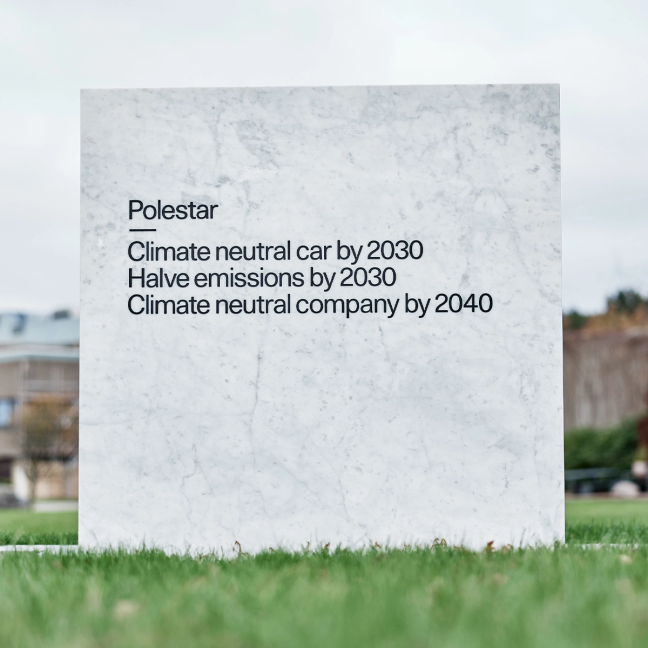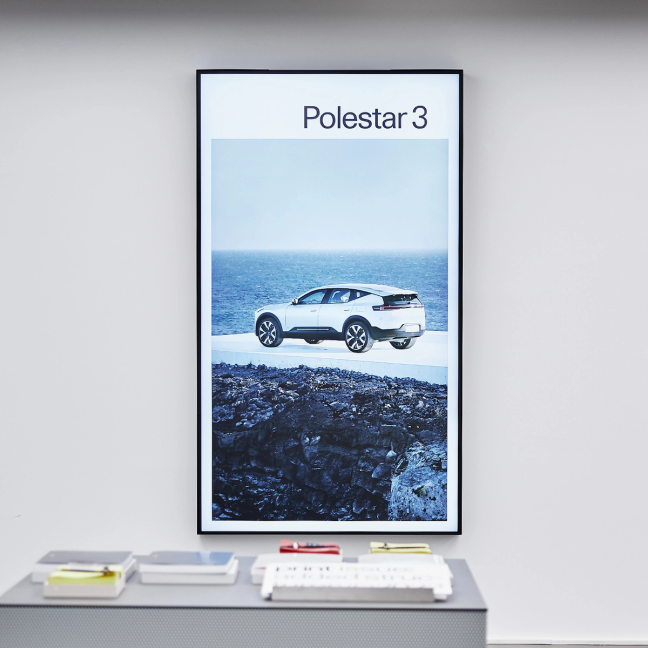

Words: Harry Jarman
Photography: Adam Fussell
The great thing about my job is that I get to travel to incredible places throughout the world. In the past year alone, I have been whisked off to Japan, to the US, and to some of Europe’s most revered cultural cities. But, one place I didn’t expect to go to was Gothenburg, Sweden’s second-largest city – and a place that’s known, to outsiders, for three things: a 100-year-old roller coaster; an important 19th-century seaport; and a series of leafy boat canals. In other words: the pretty meeting place of several archaic forms of transport.
It is striking, then, that this is the home of Polestar, one of the most exciting electric-vehicle companies in the world, and a business that does not so much build on the transport of the past than hope to completely upend it.

If you live in the UK, dear reader, you will have likely already seen more and more Polestar 2s driving on our inadequate roads. This year, however, the brand will see the long awaited Polestar 3 and Polestar 4 arrive, two cars that are set to take the venture from “start-up” to leading EV name.
At Gentleman’s Journal, we like to think that we have a special focus on entrepreneurship and business, often profiling founders and projects that, despite all odds, have thrived, often coming from the back of the pack to leading the way among their more established competitors. Past subjects have included the likes of Dyson and Gymshark, businesses that have achieved extraordinary success through innovation and principle.
It was for this reason that we jumped at the chance to head to Gothenburg and go inside Polestar, a company that we believe will very much be talked about more in the years to come.



We arrived early in the morning at what’s called ‘The Cube’, which was completed in 2016 by Swedish architecture firm Bornstein Lyckefors, with plenty of input from the Polestar team. The design is about as minimalist as you would expect from a Scandinavian technology company, and its futurist form has set the design language for Polestar’s overseas displays at global car shows such as Pebble Beach and Goodwood Festival of Speed.
It was here where we met Thomas Ingenlath, Polestar’s CEO and one of the key individuals responsible for the company’s rise. Unlike many CEOs, Ingenlath comes from a design background – most recently as head of design at Volvo – and, perhaps, that’s why the carmaker describes itself as a “design-led brand” at its very core.
Thomas Ingenlath



Ingenlath started his career at Audi and then worked his way through the Volkswagen stable, ending up with the task of helping relaunch the ailing Skoda brand – a mountainous job that was completed, of course, with huge success. It was at this point where he made the move to Volvo. While in his role there, he began to work on the Polestar brand, even coming up with its standout logo.
When I ask Ingenlath how the brand has scaled so quickly, he points out that being a pure EV company has allowed for a true and clear focus – one unrestricted by legacy and built for speed. He points out that this has often meant the team has had to build processes from scratch, which, though a big task at first, ends up making things more efficient.
Not that the growth of the brand has all been smooth sailing. Last year, in fact, saw the delay of the Polestar 3, the brand's flagship new SUV product. Like with many companies, the hiccup came down to supply issues for various parts following the pandemic. When I ask him about this, he’s quick to show his frustrations with the delay.
The main issue was that the brand had just the one model (the Polestar 2) for too long – and though Ingenlath is proud of this car, he mentions that it is not a true representation of where the brand is going. This frustration is short-lived, however, as soon as the topic moves to 2024, which will see not only the Polestar 3 delivered, but also the 4, in quick succession. It is the automotive equivalent of Netflix dropping multiple episodes of an entire award-winning series all at once. From a single, standout vehicle, Polestar will become a family of models.
Max Missoni
From The Cube, we drive up to the design studio right on top of a hill. The building itself has an art deco feel. It was originally constructed as a HQ for the then Volvo chief Pehr Gustaf Gyllenhammar. It is very much from a time gone by, and you can still imagine Gyllenhammar surveying the whole campus from his 360-view office. I am here to meet with Max Missoni, however, Polestar’s head of design, who, like any true designer, has transformed the space to be more reflective of the modern Polestar brand.
Missoni is young and impressive, talking with conviction, knowledge and passion. He worked under Ingenlath, at Volvo, as head of exterior design and has been part of the brand since the beginning. I can’t help but think that it must be hard to work under a CEO who’s also been a head of design, but the dynamic just underlines what makes Polestar so different: the belief that design is not something that simply defines how the outside should look, but something that should come from the inside first.
Missoni’s passion is clear. He has a razor-sharp aura. Before we sit down, he takes me through a presentation on where the brand is today. Three words come up a number of times. Design. Innovation. Sustainability. Missoni says these are the cornerstones of the brand. They are not used lightly.
To demonstrate the innovation in materials, he takes us through all that Polestar is doing on both the exterior and the interior of its vehicles, applying substantial, clever tweaks and innovations. This is where the cornerstones begin to interlock – the sense that innovation in design is driven by a thirst for sustainability. The company has pledged to be climate-neutral by 2030, and, so, it's had to look at every element inside the the business and every element outside of it, too, understanding that how suppliers make and source materials is just as important as what goes on at the Polestar factory itself. It’s no small feat, but it’s a pledge the company is entirely committed to. It feels existential, in more ways than one.
Missoni’s team is 70 strong, and he oversees much of the brand-side of things, as well as the design work. Everything is very much interlinked, he says. Perception starts with a sketch. I ask Missoni about the benefits of being part of a larger group like Volvo. He tells me it’s been useful to build on the existing infrastructure, especially when attempting to scale to a high-volume product. This allows the company to be leaner, faster and more nimble. The brand also has a Britain-based facility, he says, which it uses for the more specialist cars, such as the Polestar 5 – a much-anticipated, highly modern sports model.



I finish by asking Missoni what excites him most about the future. Like Ingenlath, he’s driven by a longing for the day when the brand has several cars in the lineup – the moment, as he puts it, when vision comes to fruition.
As I leave later that day, stepping out from the city within the city, I am struck by the thought that this company is still just six years old. In a century or so, will Gothenburg be known for its shipping and its canals and its antique roller coaster – or for its legacy as the birthplace of this new electric-vehicle brand? The foundations of the campus run deep and sturdy: interlocked and unshakeable, like the guiding cornerstones of the brand itself.
This feature was taken from Gentleman’s Journal’s Winter 2023 issue. Read more about it here.
Want more from the venture? We take a look at the Polestar 4, the brand’s fastest production car to date…


